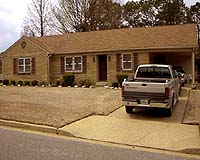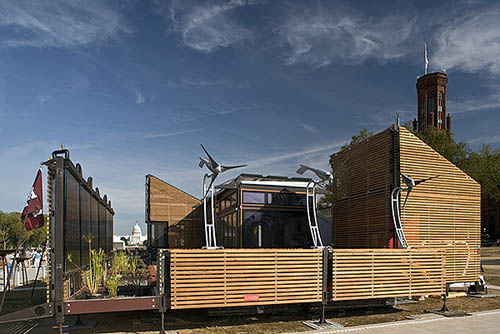For instance the home refrigerator must be totally redesigned. NOT made more efficient but redesigned. Light tunnels need to totally replace windows. The HOUSE itself needs to be completely rethought.
Energy, Housing and
Recycling Advances To Be
Unveiled At TMS
2008 Annual Meeting
 Energy efficiency is also one of the problems with today’s housing. Stephen Lee, professor in the School of Agriculture at Carnegie Mellon University in Pittsburgh, Pennsylvania, says American methods of homebuilding are not responding to global and regional changes. |
by Staff Writers
Warrendale PA (SPX) Dec 18, 2007
Energy, housing and recycling solutions for the 21st century are among the research topics that will be presented at the TMS 2008 Annual Meeting and Exhibition, March 9-13, in New Orleans, Louisiana, USA. These topics are part of the “Materials and Society” vein of the meeting, which focuses on engineering solutions to some of society’s most perplexing problems.
“Engineers solve problems, make things happen and enhance the quality of life on this planet. This has always been a constant; however what has changed over time has been the needs of society and how engineers have responded to those needs,” according to Diran Apelian, Ph.D., Director of the Metal Processing Institute in Worcester, Massachusetts, and chair of the Materials and Society program.
“With 20 percent of the world population living in absolute poverty; 18 percent of the population lacking access to safe drinking water; 40 percent having no access to sanitation; energy consumption increasing at a higher rate than population growth; and healthcare needs and expectations increasing out of sync with the cost of health care delivery; there is no doubt that the engineer for the 21st century has to be a social scientist.”
One such challenge is finding clean, alternative sources to produce energy at economically, competitive rates given the world’s demand for energy, and global warming. Tomas Diaz De La Rubia of the Lawrence Livermore National Laboratory in Livermore, California, will discuss the efforts to date to develop new materials for energy applications in his presentation, “Energy Sources for the 21st Century – Implications and Challenges.”
“Meeting the growth in energy demand while mitigating climate change will demand new energy sources beyond fossil fuels, such as solar, nuclear and, ultimately, fusion.” Dr. Diaz says these new materials must be highly efficient, safe and reliable in extreme environments.
Energy efficiency is also one of the problems with today’s housing. Stephen Lee, professor in the School of Agriculture at Carnegie Mellon University in Pittsburgh, Pennsylvania, says American methods of homebuilding are not responding to global and regional changes.
“Our houses of today are not meeting the needs of the users, nor are they performing as good global citizens.” Professor Lee believes applying industrial engineering principles to the housing delivery process could solve these problems. In his presentation, “Housing for the 21st Century – Design, Technology and Construction,” he will use the 2007 Carnegie Mellon Solar Decathlon house as a case study to illustrate process solutions.
:}
Reengineering is actually pretty simple
:}
http://bita.hdinc.com/en/art/?132
But “resizing” is an inadequate definition for reengineering. Classic reengineering is re-deciding the way we do business based on the best options available to us at that time. It is not driven fundamentally by people, but by changes in technology that occur over time.
Take the example of our CEO’s house. Sixty years ago a young accountant told his fiancee, “I’ll build us the best home money can buy.” Then he worked with an architect to design the house. Some of the decisions he made were about which plumbing and lighting options to install. He and his architect looked at all the options available in the 1930’s and chose the best ones. So they “engineered” the house. Sixty years later, Dutch (Holland) and his wife, Jan, sat down with an architect to consider some changes. Once again they had to make decisions about plumbing and lighting. This time they had an entirely different set of options to look at. Based on these new options, they “reengineered” the house and put in plumbing and lighting systems not available to the original builder. We would expect that someone purchasing the house in 2020 will probably make different choices … ones that Dutch and Jan don’t — can’t — know about.
:}
AHHHHH home sweet home
:}
http://www.solardecathlon.org/homes_gallery.html#carnegie
The last one is my favorite – I love personal windmills…



